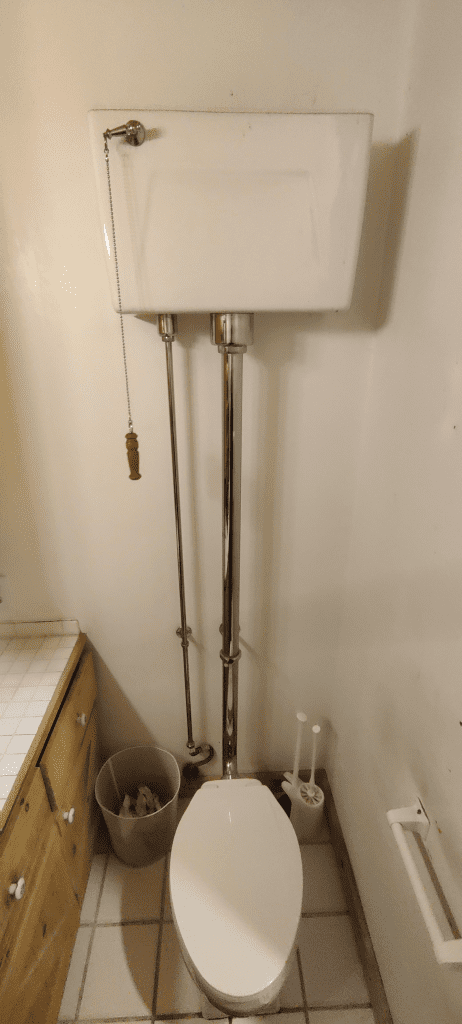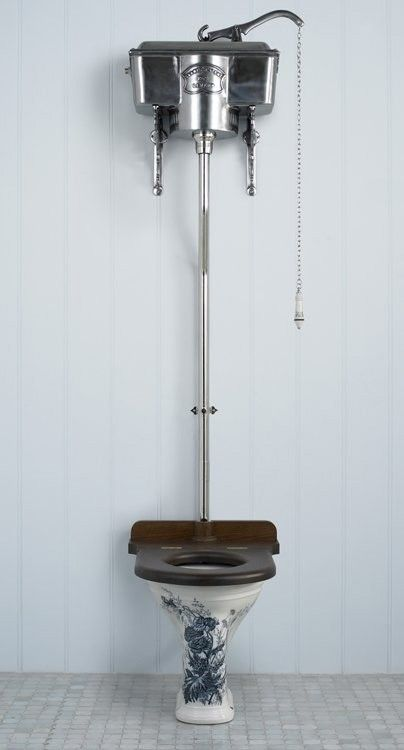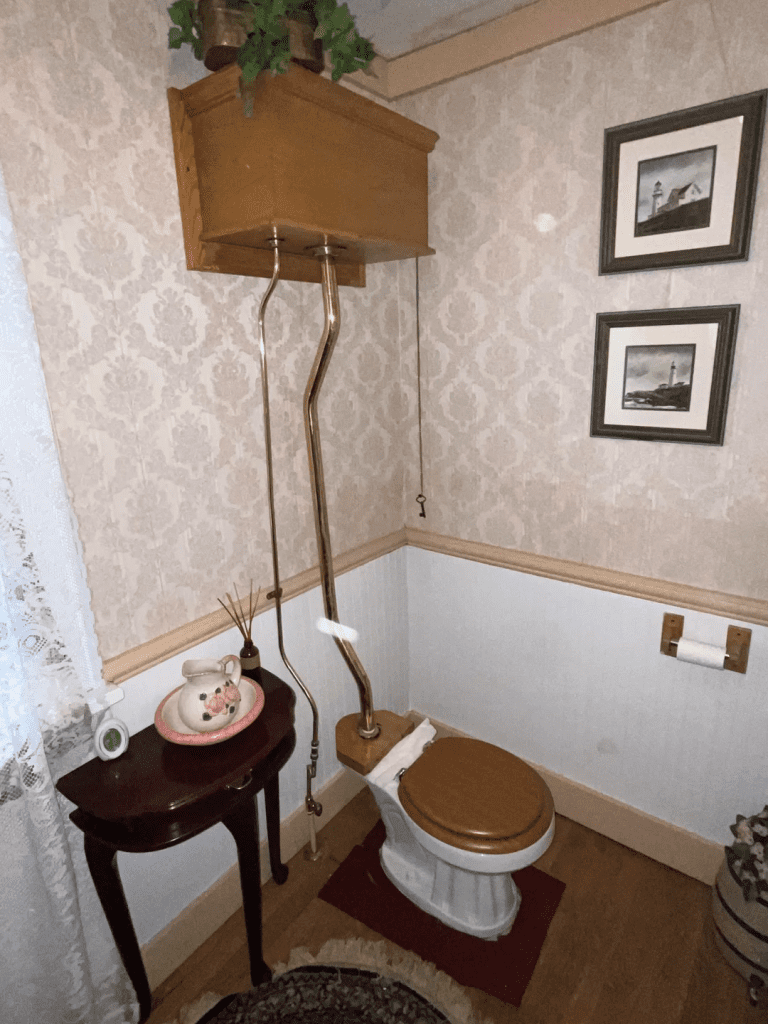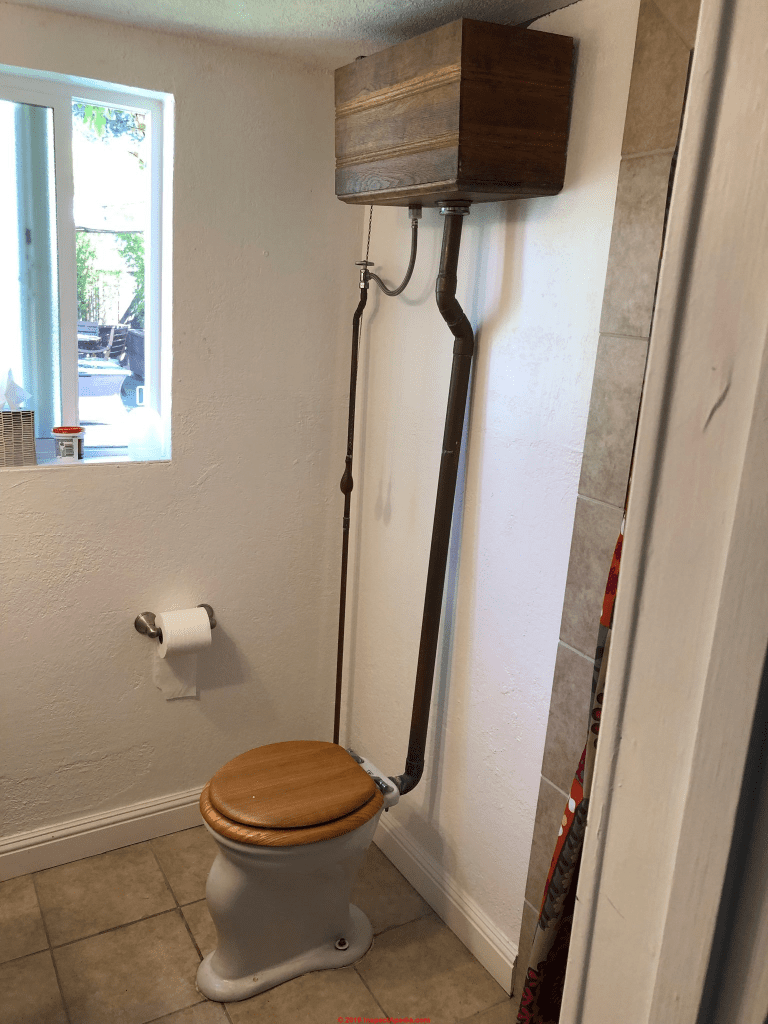Before the rise of modern plumbing and sleek, space-saving toilets, homes and buildings relied on a very different flushing system. If you’ve ever seen an old-fashioned water tank mounted high above a toilet, you’ve witnessed a piece of plumbing history.
These elevated water tanks, often referred to as high-level cisterns, were a staple in bathrooms for decades. Though they’ve mostly disappeared from modern homes, they remain iconic symbols of vintage plumbing. But what made them so special, and why did they fall out of favor? Let’s take a deep dive into the old toilet water tank system, how it worked, and why it’s still appreciated by restoration enthusiasts today.

What Was the Old Toilet Water Tank System?
The old toilet system operated on a gravity-fed flushing mechanism. Unlike today’s compact, all-in-one toilet designs, these older models featured a separate water tank mounted high above the toilet bowl.
🚽 How It Worked:
- The water tank (cistern) was positioned several feet above the toilet, usually mounted on the wall.
- A long pull chain or lever was attached to the tank, which the user pulled to release water.
- When the chain was pulled, a valve opened, allowing a large volume of water to rush down through a pipe into the toilet bowl.
- The force of the water created a strong flush, effectively clearing waste.
This gravity-assisted flushing system was simple, reliable, and effective. The higher the tank, the stronger the flush!
Why Did Toilets Have High Water Tanks?
The main reason old toilet systems had elevated tanks was to take advantage of gravity. The higher the water source, the greater the water pressure, which ensured a powerful and thorough flush.
✔️ Improved Flushing Power – Water fell from a greater height, increasing speed and force.
✔️ Minimal Mechanical Parts – No complex mechanisms meant fewer chances of malfunctions.
✔️ Efficient Water Usage – Older systems used less water than some early low-level toilets.
Before modern plumbing advancements, gravity-fed flushing was the best way to ensure that waste was effectively removed without relying on pumps or additional pressure systems.

The Evolution of Toilet Systems: What Changed?
By the mid-20th century, toilets started to change. The old high-level water tanks were gradually phased out, replaced by more compact and efficient systems.
🔹 Why Did They Disappear?
🏠 Space Efficiency – Modern bathrooms are designed to save space, and high-mounted tanks required extra room above the toilet.
🔧 Easier Installation & Maintenance – Keeping the tank closer to the toilet meant fewer potential leaks and simpler repairs.
💧 Water Conservation – Older toilet systems used more water per flush compared to today’s water-efficient models.
🚽 Aesthetic Appeal – Interior design trends shifted toward sleek, minimalistic fixtures, making bulky water tanks look outdated.
As indoor plumbing technology improved, low-level and concealed cistern toilets became the new standard, making the traditional high-level water tank a rare sight.
Are High-Level Water Tanks Still Used Today?
Believe it or not, high-level cistern toilets haven’t completely disappeared. While they are no longer the standard, they still exist in specific places and are even making a comeback in some design circles.
📍 Where You Can Still Find Them:
✔️ Historic Homes and Buildings – Many preserved Victorian and Edwardian homes maintain original high-tank toilets.
✔️ Luxury Vintage Bathrooms – Some high-end designers now install classic-style toilets for a retro aesthetic.
✔️ Public Restrooms in Older Buildings – Schools, railway stations, and heritage sites often retain traditional plumbing.
✔️ Theaters and Museums – Some locations intentionally preserve old-style toilets to match historical architecture.
Many vintage enthusiasts and home restorers actively seek out these classic water tank toilets to bring back the charm of a bygone era.

Why Some People Still Prefer Old Toilet Systems
Though modern toilets are more efficient and practical, some homeowners and businesses still opt for high-level water tanks.
💡 Here’s why some still love them:
🏛 Classic Charm – They add a timeless elegance to vintage-inspired bathrooms.
💧 Powerful Flush – Gravity-powered systems can be more effective than some low-flow modern toilets.
⚙️ Durability – The simplistic mechanism of old water tanks lasts for decades with minimal maintenance.
🌍 Eco-Friendly Appeal – Some argue that gravity-fed toilets require less energy to operate, making them a more sustainable option.
For those who appreciate classic craftsmanship and traditional designs, a high-level cistern toilet is more than just a functional fixture—it’s a piece of history.
The Nostalgia Factor: Memories of the Pull Chain Toilet
If you grew up in an older home, chances are you remember the distinct sound of pulling the chain and hearing the rushing water from above.
🔹 That satisfying clunk when the chain was pulled.
🔹 The powerful whoosh as the water surged down.
🔹 The occasional prank of letting go of the chain too early, forcing someone else to reach up!
For many, these old toilets are a nostalgic reminder of childhood homes, grandparent visits, or vintage public restrooms.
Though modern toilets are undeniably more practical, the old water tank system has an undeniable charm that resonates with those who remember its heyday.

Final Thoughts: A Symbol of Plumbing History
The old toilet water tank system may no longer be a common household feature, but it remains a beloved part of architectural history.
🏠 It was a simple yet effective solution to the challenges of early plumbing.
💡 It took advantage of gravity to provide a strong, reliable flush.
🔧 Though rare, it’s still appreciated by vintage lovers, historians, and designers.
While modern toilets dominate today’s bathrooms, the high-level water tank stands as a symbol of innovation, durability, and classic home design.
So, if you ever come across one in an old home, theater, or historic building, take a moment to appreciate its unique design and role in plumbing history. After all, some things from the past deserve to be remembered!